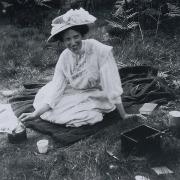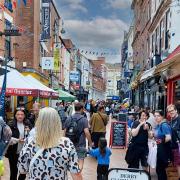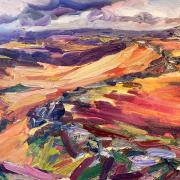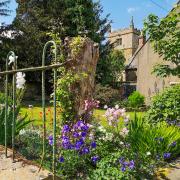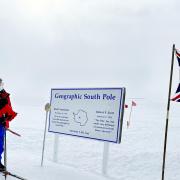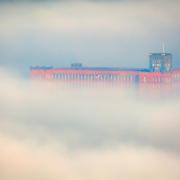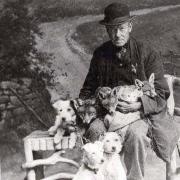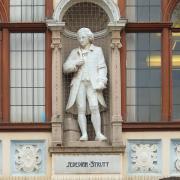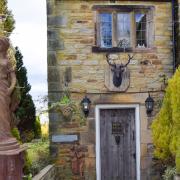I have a special, rather personal connection to Thomas Cook, the Derbyshire-born so-called ‘Father of Mass Tourism’.
When I left my secondary modern school in north Essex with three GCE ‘O’ Levels, my headmaster enquired: ‘What are you going to do, Smithy? You can’t add up, you’re useless at science and you’re not exactly practical are you? The only thing you can do is write. Why don’t you become a journalist?’
‘No,’ I told him unequivocally, ‘I want to travel.’ So another obliging teacher managed to get me a job working for Thomas Cook & Son at their Berkeley Square headquarters in central London.
After making the tea for a couple of weeks as the office boy, I learned that you needed languages to be a courier and, desperately homesick, I returned to Essex.
The head was right of course, and I spent the next couple of years pestering local newspapers until one finally took me on to begin what was to become a 50-year career in journalism.
And eventually I did become a travel journalist and visited many different parts of the world as a long-standing member of the British Guild of Travel Writers.
So, although rather early on in my then totally-unqualified career, it was Thomas Cook who gave me my first chance.
Thomas Cook was born on November 22, 1808, to John and Elizabeth Cook, who lived in Quick Close, Melbourne, in the south of the county.
At the age of ten, Cook started working as an assistant to a local market gardener on Lord Melbourne’s estate at Melbourne Hall.

Viscount Melbourne, of course, became British prime minister in 1834 and between 1835–1841, and the city of Melbourne in Victoria, Australia, took its name from him.
Always a deeply religious man, in 1828 Cook became a Baptist missionary and toured the East Midlands area as an evangelist, distributing Baptist pamphlets.
In the 1830s, he became involved in the temperance movement which, unbeknown to him, was later to have a crucial bearing on his future career.
Cook married Marianne Mason (1807–1884) at St Peter’s parish church in Barrowden, Rutland in March, 1833.
Their son, John Mason Andrew Cook, was born a year later, but their daughter, Annie Elizabeth, who was born in 1845, tragically died in a bath aged 35 after inhaling poisonous fumes from a faulty water heater.
It was the opening of the extended Midland Counties Railway to Trent Junction in 1840 which gave Thomas Cook the opportunity he’d been looking for.
He arranged to take a group of temperance campaigners from Leicester’s Campbell Street railway station to a teetotal rally in Loughborough, just 11 miles away, on July 5, 1841.
It was to be the first ever ‘Cook Excursion.’
Cook escorted about 485 people, who paid one shilling (5p) each for the return train journey. This was claimed to be the world’s first railway excursion, although this has been disputed in recent years.
In August 1845 he arranged for a party to travel on a much more ambitious excursion, from Leicester to Liverpool. And, boosted by the success of his excursions in a virtually car-less population at the time, the following year he took 350 people from Leicester on a grand tour of the Scottish Highlands.
During the Great Exhibition year of 1851, Cook arranged for no less than 150,000 people to travel to the groundbreaking, Empire-boosting show, organised in part by Prince Albert at the Crystal Palace in London.
The great, 1,850 feet (564m) long and 108 feet (33m) high glass-clad exhibition hall was designed by Joseph Paxton of Chatsworth, based on the glass and iron conservatory he had originally produced for the Duke of Devonshire.
Four years later, Cook planned and executed his first excursion abroad, travelling to the continent when he took two groups on a ‘Grand Circular Tour’ of Belgium, Germany and France, ending at the Great Exhibition of products of French industry in Paris.
Cook eventually acquired business premises in Fleet Street, London in 1865, in an office which also contained a shop selling essential travel accessories, including guidebooks, luggage, telescopes and footwear.
In 1872, he formed a partnership with his son, John, and renamed the travel agency with its world famous moniker of Thomas Cook & Son.
In accordance with his strongly-held anti-alcohol beliefs, he and his wife also ran a small temperance hotel above the office.
They introduced the ‘hotel coupons’ in 1868, which were detachable coupons in a counterfoil book issued to the traveller.

These were valid for either a restaurant meal or an overnight hotel stay always provided, of course, that they were on Cook’s list.
Thomas Cook was a pioneer in setting up tourism systems, making mass tourism possible initially in places such as Italy.
These circular tickets allowed travel by train for a preset number of days along predetermined routes on most Italian railways.
He also designed a series of hotel coupons to complement these tickets, which could be exchanged for lodging and meals at designated hotels.
Cook also introduced circular notes which could be changed at designated hotels, banks, and tickets agents for Italian lira at a predetermined exchange rate. His introduction of a tourism-specific currency facilitated easier and more efficient trips within Italy.
It was said that he ‘… helped to stabilize the burgeoning Italian economy, not only by increasing the revenues from tourism but also by expanding the circulation of Italy’s new currency, the lira.’
Several disagreements between father and son were resolved when the son persuaded his father to retire at the end of 1878.

In later years, the firm of Thomas Cook & Son became a world leader in package holidays and mass tourism all over the globe, even running its own airline.
Following the failure of last-ditch rescue negotiations, the UK Civil Aviation Authority announced in 2020 that Thomas Cook had ‘ceased trading with immediate effect’.
The tour operator collapsed after 178 years in the mass tourism business, all of which had started with the pioneering Derbyshire-born Thomas Cook, who made his vision both a reality and a huge success.
Whilst no longer on the high street, it is now known as Thomas Cook Tourism and opened as an online travel agent in 2020, so the name continues to live on.
Founder Thomas Cook moved back to Knighton, Leicester, where he died on July 18, 1892, having suffered from blindness in his declining years. He was buried in Welford Road Cemetery, Leicester later that month.
Thomas Cook is remembered by a statue, complete with suitcase, sculpted by James Butler which stands outside Leicester Railway Station and was unveiled in January 1994 by his great-great-grandson, another Thomas Cook.







